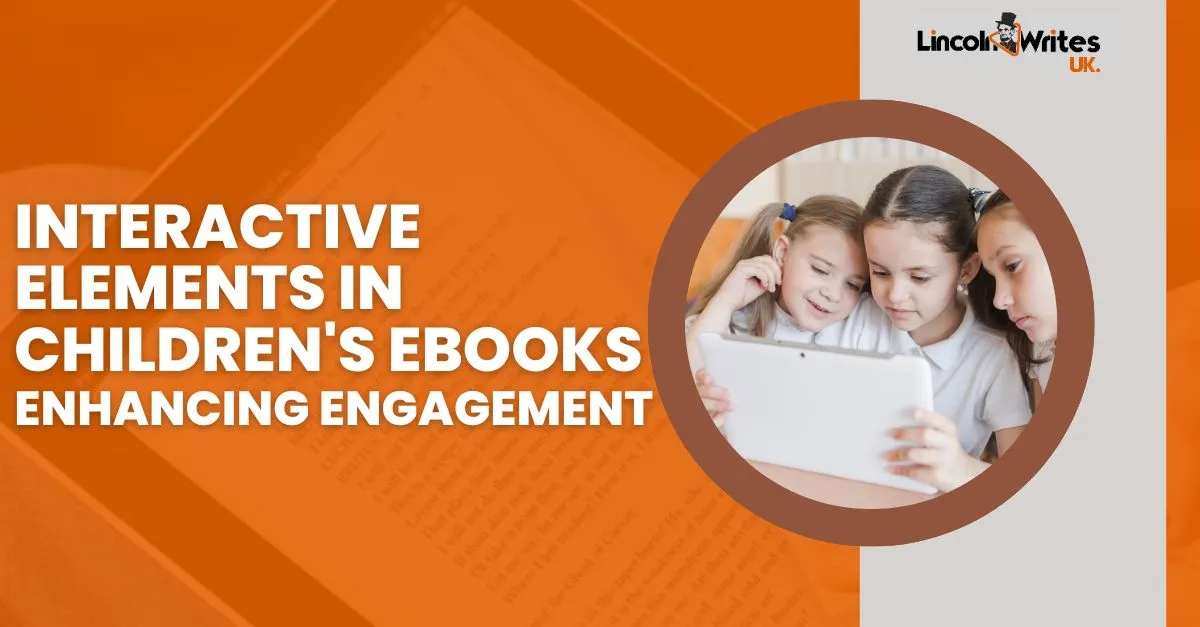In today’s digital-first world, children aren’t just reading stories. They’re tapping, swiping, listening, and even solving puzzles as they go. This new generation of storytelling is powered by interactive children’s eBooks, where animation, audio, games, and responsive design bring the narrative to life in ways traditional books simply can’t.
For authors, educators, and publishers, embracing interactivity isn’t just a trend. It’s the future of early reading engagement. But creating an eBook that genuinely connects with children requires more than just sprinkling in a few sound effects. It’s about enhancing the reading experience, not distracting from it.
If you’re looking to inspire young minds while ensuring your eBook stands out in a saturated market, it’s time to understand the mechanics and the magic behind interactive elements.
Why Interactivity Matters in Children’s eBooks
Let’s face it: keeping a child’s attention these days is no small feat. With endless access to entertainment, educational apps, and short-form content, traditional books have some stiff competition. That’s where interactive children’s eBooks shine.
They transform passive reading into an active experience. Rather than simply reading about a frog hopping across a pond, a child can tap to make the frog jump. Rather than guessing what a lion sounds like, they can hear it roar with a simple touch. These small but thoughtful additions create sensory engagement that deepens comprehension, boosts memory retention, and makes reading feel more like play.
And for authors, interactivity isn’t just about bells and whistles. It’s a strategic tool. Done right, it can build brand loyalty, improve educational outcomes, and set your book apart on platforms like Apple Books and Amazon Kindle.
The Best Interactive Features That Actually Work
When creating interactive children’s eBooks, not every feature is necessary, and some can even be counterproductive if they clutter the screen or overwhelm the narrative.
The most effective interactive elements tend to be:
- Tap-to-animate illustrations: Simple animations like wiggling tails or blinking eyes make illustrations feel alive.
- Embedded audio narration: Children can follow along with text as they hear it spoken aloud, ideal for early readers or ESL learners.
- Sound effects and ambient noise: Rain falling, doors creaking, birds chirping, these subtle sounds boost immersion.
- Mini games and learning tasks: From matching shapes to solving riddles, small games can reinforce key story elements or educational goals.
- Page transitions and swiping gestures: Interactive navigation makes exploring the book feel intuitive and fluid.
The key is balance. Great children’s eBooks don’t bombard kids with stimulation. They enhance understanding and emotional connection.
Storytelling That Responds to Children
At the heart of every interactive eBook should be a well-structured, engaging story. Interactivity is not a replacement for good writing. It’s a companion.
This is where expert eBook writing services come into play. Working with professionals who understand the difference between interactivity and gimmickry is crucial. A strong service can ensure your story flows naturally while layering in digital features that add value.
And yes, interactive elements can still preserve your writing voice. With digital publishing, authors need more ways than ever to protect their author voice from getting lost in tech-heavy production.
How to Plan an Interactive eBook from Scratch
Creating a successful interactive children’s book isn’t as simple as writing a story and handing it off to a developer. It starts at the concept level.
This means:
- Understanding your target age group’s cognitive and sensory development
- Defining learning or entertainment goals for each interaction
- Mapping interactivity scene by scene, not all pages need to “do” something
- Collaborating with illustrators, narrators, and developers early in the process
For nonfiction or educational content, this also includes research, sometimes on par with ghostwriting for executives, where accuracy and clarity are paramount. Whether you’re guiding young minds through the ABCs or space exploration, every word (and sound) matters.
Can You Convert a Print Book into an Interactive eBook?
Yes, you can convert a print book to an eBook, but it requires more than a simple PDF export.
While tools like Kindle Kids’ Book Creator or Book Creator for iPad offer user-friendly drag-and-drop interfaces, the real challenge is in thoughtful adaptation. Converting from print to interactive involves:
- Reworking page design to support tap or swipe gestures
- Sourcing or creating new artwork
- Adding narration or audio cues
- Adjusting pacing to align with interaction timing
Authors should consider hiring experienced teams who understand both the creative and technical dimensions of this transition.
Marketing Your Interactive eBook
Once your eBook is ready, how do you make sure it reaches readers?
Start with a launch plan that includes:
- Book trailer marketing to showcase animations and interactivity
- Strategic placement on child-friendly reading apps
- Engaging previews or live readings via social media
Keep in mind, the journey doesn’t stop at launch. Reviews, shares, and visibility grow over time, especially when your story resonates emotionally.
Editors, Beta Readers, and Feedback Loops
Before you publish, you’ll want to gather feedback. This is where the beta readers vs editors debate comes in.
While beta readers offer raw audience reactions (especially helpful if they’re parents or educators), a professional editor ensures structure, clarity, and age-appropriate language. Ideally, you’ll use both. Think of them as complementary filters that strengthen your book before it goes public.
The Big Picture: Your Author Brand
Publishing one strong interactive book is great, but what about building a series or brand?
Authors looking to go further should consider:
- Writing thought leadership articles about their creative process
- Repurposing character assets to repurpose blog content or merchandise
- Applying SEO copywriting techniques to their landing pages
- Developing a long-form content strategy for blog and newsletter readers
- Expanding into nonfiction guides using professional biography tips for “about the author” sections
The right eBook can become a powerful stepping stone in your publishing journey.
Planning Ahead for Business
Even creative projects need business planning. Before you spend thousands on development or marketing, step back and evaluate the demand for your book. A bit of market research in business plan format can uncover which themes, age groups, or styles perform well in your niche.
And don’t forget the admin side: tax for authors in the UK can be complex, especially with royalty platforms and international sales.
Understanding how to register income, claim expenses, and prepare for quarterly reporting is just as important as storyboarding your book.
Agents, Publishers, and Going Indie
If you’re hoping to land a deal for your children’s eBook, you’ll likely run into the agents vs publishers UK dilemma.
Agents can help you navigate rights, royalties, and marketing, but they may be hesitant with interactive-first titles unless you’ve already built a strong platform. Many authors find more flexibility in going indie, especially with tools like Apple Books, Kobo, and Amazon KDP.
The advantage? Total creative control and the ability to adapt quickly as trends evolve.
Final Note
Interactive children’s eBooks are more than flashy experiments. They’re the future of young storytelling. When designed thoughtfully, these books combine the magic of narrative with the engagement of play, creating unforgettable reading experiences.
Whether you’re an author dreaming of your first children’s book or a publisher planning your next digital release, the right interactive features, backed by expert eBook writing services, can elevate your work beyond expectations.
At Lincoln Writes UK, we help authors craft compelling, beautifully structured, and digitally innovative children’s eBooks that resonate. From story development to animation scripting and launch support, we’ve got the toolkit and the team to bring your vision to life.


